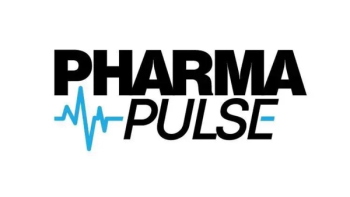
Asembia 2025: Therapy Advancements Highlight Growing Cost and Access Concerns
Fran Gregory, VP, emerging therapies, Cardinal Health, discusses the evolving cell and gene therapy landscape, highlighting pipeline growth, cost challenges, and emerging therapeutic areas beyond oncology and hematology.
In an interview with Pharmaceutical Commerce, Fran Gregory, VP, emerging therapies, Cardinal Health, shared key insights into the evolving landscape of cell and gene therapies. Speaking about the current state of the market, the anticipated growth of the pipeline, and the critical steps needed to ensure long-term sustainability, Gregory highlighted both the transformative potential of these therapies and the systemic challenges that must be addressed. Her perspective offered a comprehensive look at where the field stands today—and where it's heading next.
PC: You were a part of the ‘Cell, Gene and Beyond: What’s Working and Where Do We Go Next’ panel. Can you provide a brief synopsis of what the session entailed?
Gregory: Our presentation provided a foundational overview of cell and gene therapy, including the current state of the market and where we believe the field is headed. We offered a pipeline snapshot, spotlighted several key products, and discussed what’s going well in the space. From there, we identified areas that require additional attention to ensure continued progress.
We've made significant strides over the past eight years since the first cell and gene therapy launch. This session was really about exploring the next wave of advancements necessary to propel the industry forward.
PC: What stands out to you most about the current state of the cell and gene therapy pipeline, and where is the momentum building right now?
Gregory: The most striking aspect is how rapidly the field is evolving. The pipeline is incredibly promising in terms of patient impact—we anticipate over 100,000 patients could be treated with cell and gene therapies by 2030. However, there's also a significant financial burden. We're projecting $75 to $80 billion in healthcare system costs by that same year, which is approaching quickly.
While it’s inspiring to consider the lives that could be transformed by these therapies, we must also address affordability. That means advancing innovative payment models, implementing robust outcomes tracking, and refining health economics frameworks.
As for the pipeline itself, it's currently heavily concentrated in oncology and hematology, with many approved and in-development therapies in those areas. But what’s especially exciting is the emerging diversification—we’re beginning to see growth in other therapeutic categories like neurology, ophthalmology, rheumatology, and immunology. This broadening suggests the pipeline will continue to expand its impact across a wider range of diseases in the near future.
Full Interview Summary: The session began with an overview of the cell and gene therapy (CGT) landscape—where the industry stands today and what the future may hold. The discussion included a pipeline review, highlighted key products, and identified both current successes and future areas of focus. Since the first CGT approval eight years ago, there has been significant progress. The conversation emphasized the need to continue advancing the field to ensure its momentum is sustained.
The CGT pipeline is rapidly evolving and holds tremendous promise, with projections estimating over 100,000 patients may benefit by 2030. However, this comes with a projected $75–80 billion cost to the healthcare system, prompting the need for sustainable payment models. Currently, around half of the pipeline targets oncology and hematology, but the field is expanding to include neurology, ophthalmology, rheumatology, and immunology, signaling broader therapeutic impact.
Patient outcomes from CGTs are transformative, yet there’s a growing need for long-term data to quantify their durability and cost-effectiveness. The discussion underscored the importance of robust health economic modeling and outcomes tracking to demonstrate value and guide reimbursement strategies. Insights from groups like ICER already point to the value of CGTs, but more evidence is required to solidify these claims.
Innovative payment models are crucial for long-term sustainability. The most promising models include outcomes-based contracts, where reimbursement aligns with patient response, and annuity payments, which spread costs over time. Models based on performance guarantees are less popular due to their all-or-nothing structure.
Looking ahead, the boldest move the industry can make is to collaboratively develop systems that ensure patient access while addressing affordability. Achieving this balance will require cooperation across stakeholders—payers, manufacturers, providers, and intermediaries—to ensure CGTs deliver on their full potential.
Newsletter
Stay ahead in the life sciences industry with Pharmaceutical Commerce, the latest news, trends, and strategies in drug distribution, commercialization, and market access.




